Top Best 5G Smartphones Under 20,000. Know More Details.

Top Best 5G Smartphones Under 20,000: Reasons to purchase a 5G phone
HIGHLIGHTS
- If you’re looking to buy a 5G smartphone, here are some of the finest picks available.
- Oxygen OS 12.1 is installed atop Android 12.0 on the OnePlus Nord CE 2 Lite 5G smartphone.
- A 6.6-inch Full HD+ LCD screen with a 120Hz refresh rate is included on the Galaxy M33.
In addition to having 5G capabilities, the best 5G mobile phones under Rs 20,000 deliver a set of features that are necessary for next-generation networking, making them 5G ready. Statistics show that 5G smartphones only made up 18% of the market in 2021, but researchers predict that by 2022, almost 40% of all 5G smartphone sales will have arisen. If you’re looking to buy a 5G smartphone, here are some of the best alternatives available.
Many customers are exploring the greatest models money can buy because 5G cell phones are the newest trend on the market. This list is for you if you wish to buy a 5G smartphone and have a budget of Rs. 20,000. Each smartphone on this list has a Gadgets 360 overall score of 8 or higher, indicating that it will show in the panel, including in terms of battery life, camera quality, design, display, performance, software, and overall value for money.
The smartphones in this list are recently released and may be bought in India right now (in the last 18 months). Each smartphone is mentioned with links to its full specifications, comprehensive review, other models made by the same manufacturer, and its overall rating and major features.
OnePlus Nord CE 2 Lite
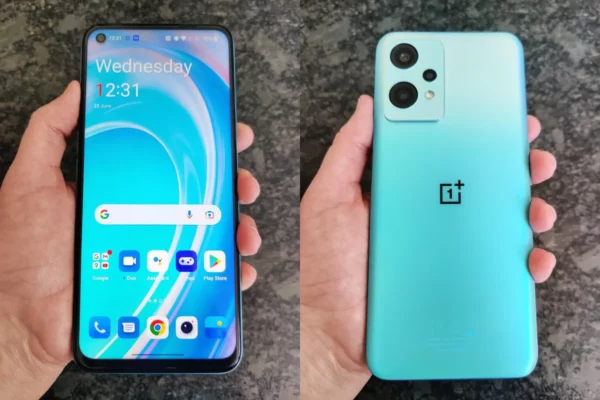
In addition to Android 12.0, the OnePlus Nord CE 2 Lite 5G operates under Oxygen OS 12.1. The 6.59-inch display of the Nord CE 2 Lite is Full HD+ and refreshes at 120 frames per second. It is powered by a Snapdragon 695 processor. The device has three cameras: a 2MP depth sensor, a 64MP primary camera with EIS, and a 2MP macro camera. Sony’s IMX471 sensor is used in the 16MP front-facing camera. There are two RAM options (6GB or 8GB) and one storage option (64GB or 128GB) for the Nord CE 2 Lite. A 5000mAh battery with 33W quick charging is made inside the phone.
Redmi Note 11 Pro Plus
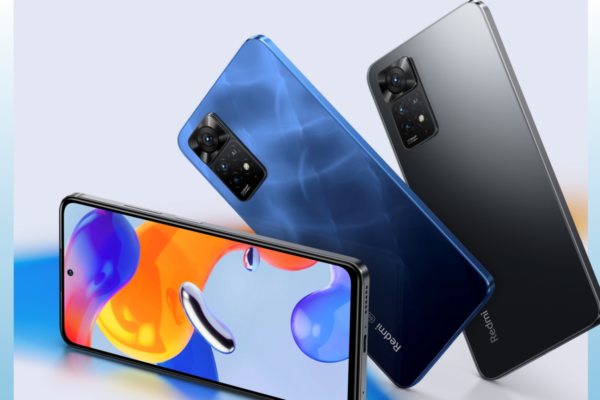
The Redmi Note 11 Pro+ boasts a new rate of 120Hz for its display, which is a 6.67-inch Super AMOLED panel. You may choose between 6GB or 8GB of RAM, 64GB or 128GB of storage, and a Snapdragon 695 processor. With a 108MP triple camera design that includes an 8MP ultra-wide and 2MP macro sensor, it presents an adjustable photography experience. Take selfies with the 16MP front-facing camera. The Note 11 Pro+’s 5000mAh battery, which supports 67W quick charging, requires 42 minutes to fully charge. The comes in two storage configurations: 64GB/128GB and 6GB/8GB of RAM.
Samsung Galaxy M33
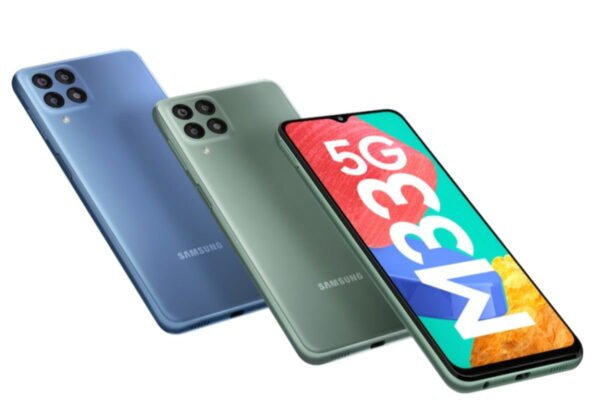
A 6.6-inch Full HD+ LCD screen with a 120Hz refresh rate is included on the Galaxy M33. It sports 6GB/8GB RAM, an Exynos 1280 octa-core processor, and 128GB of storage. A 50MP main camera with an f/1.8 aperture, a 5MP ultra-wide camera with a 123-degree field of view, a 2MP depth sensor, and a 2MP macro camera are all located on the back.
Both the front and back cameras are 8 megapixels (MP), and both are capable of recording in 4K Ultra High Definition (UHD) at 30 frames per second. In reality, the Galaxy M33 is equipped with a 3.5mm audio jack and a side-mounted fingerprint reader. The battery life of the Galaxy M33 is impressive, lasting for a whole day on a single charge, and it can be charged quickly (in 25 minutes) thanks to the device’s powerful 25W charging speed.
Moto G71 by Motorola
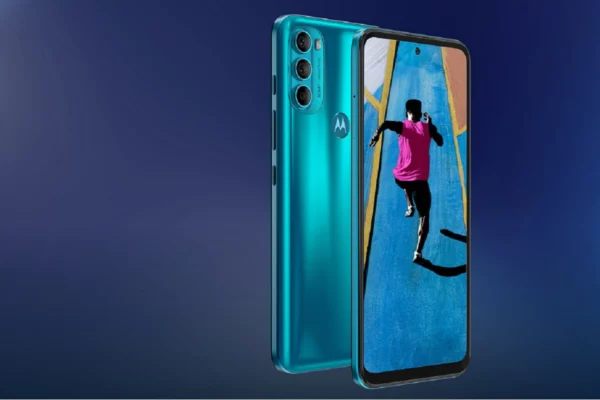
Motorola included a 6.4-inch AMOLED screen in their 5G Moto G71 model. The screen is bright enough to see outside and can be seen from good angles. The phone is comfortable to use because Motorola was able to keep the weight under control and has well-compact dimensions. While most of its rivals only provide side-mounted fingerprint scanners, it has a fingerprint scanner on the back.
With 6GB of RAM and 128GB of storage, the Moto G71 5G is equipped with a Qualcomm Snapdragon 695 SoC. Additionally, you have the choice of using around 1.5GB of storage as RAM. The phone is good and is suitable for light and frequent users. The 5,000mAh battery readily lasted longer than a day of use and is equipped with superior battery performance. A 33W charger is included in the box by Motorola.
A 50-megapixel primary camera, an 8-megapixel ultra-wide angle camera, and a macro camera are all featured on the Moto G71 5G. With the direct and ultra-wide-angle cameras, the phone was able to capture clear images during the day. It had superb portraits, selfies, and close-ups. The performance of the low-light camera was average, and the night mode was aggressive.
Vivo T1
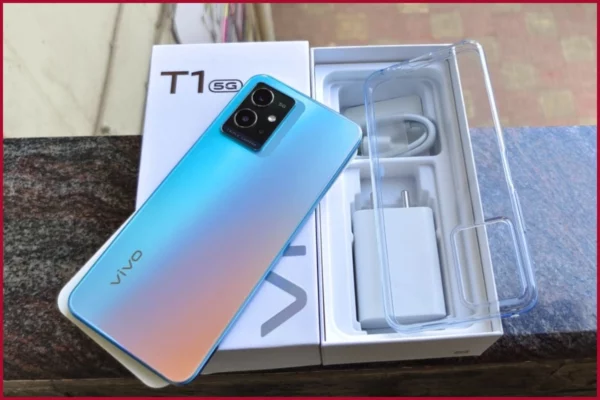
Introducing the Vivo T1, the pioneer of the T series of smartphones. It caters to Gen Z customers that need reasonable prices for high-quality requirements. A 6.58-inch full-HD+ display with a 120Hz refresh rate and panda glass for protection is featured on the Vivo T1 5G. It does, however, have a dated-looking dewdrop notch.
It is possible to purchase the Vivo T1 with 4GB, 6GB, or 8GB of RAM for the Qualcomm Snapdragon 695 SoC. All of these variants have 128GB of storage. Another option for additional storage expansion is a microSD card. The phone’s Android 12 operating system is covered by the Funtouch OS skin by Vivo. Additionally, certain bloatware applications are packaged with it. The Vivo T1 5G’s 5,000mAh battery had respectable battery life. Although 18W quick charging is supported, it still moves more slowly than its rivals.
A 50-megapixel primary camera, a 2-megapixel depth camera, and a 2-megapixel macro camera made up the T1 5G’s triple camera system. Photos taken in the daylight and close-ups taken in favourable lighting both looked fine. The performance of the low-light camera was just average, and the video wasn’t stabilized either.
iQOO Z5
Although the iQoo Z5’s beginning price is more than that of the Z3 (which it will shortly replace), other mid-range smartphones are often more feature-competitive. Although it still has plastic construction, its design has been a little altered and it provides a better grip. The Qualcomm Snapdragon 778G CPU served admirably in our benchmark tests and when gaming, putting it on par with the mid-range competition.
While playing games, the 6.67-inch LCD panel’s 120Hz refresh rate functions admirably, although it is highly prone to becoming a smudged mess. The Z5’s stereo speakers, which were finally available, functioned admirably whether playing games or watching movies. Although it is not outstanding in low light, camera performance is adequate in daylight. Given that it must compete with mid-range smartphones that provide superior camera quality as well as performance, this does not make the Z5 appear good.
Although you do lose out a little in terms of charging speed, battery life is fantastic. The Z5 doesn’t feel like a notable improvement over the Z4. The competition contributes considerably superior products at only slightly higher pricing, so it does deliver some tiny advantages, but not enough to make it simple to suggest.
Realme 8s 5G
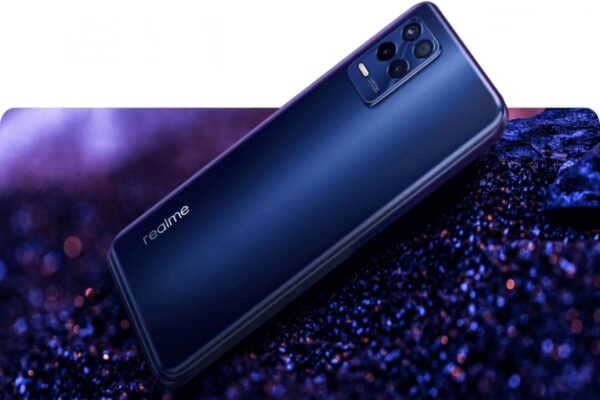
Similar to the Realme 8 5G in appearance is the Realme 8s 5G. With small bezels on the sides and a slightly larger chin, it boasts a 6.5-inch display. There is a side-mounted fingerprint scanner on the Realme 8s 5G. The triple camera module on the Realme 8s 5G sticks out far enough to make it wobble when placed on a table. The MediaTek Dimensity 810 5G CPU, which is combined with either 6GB or 8GB of RAM, powers the Realme 8s 5G.
The 128GB of storage on both models may be extended via the specific microSD card slot. Additionally, Realme delivers a Virtual RAM option that allows you to increase RAM by using 5GB of storage. A 5,000mAh battery and a 33W charger are included in the package. The Realme 8s 5G’s battery life was good, and it may easily last longer than a day. The 5,000mAh battery was charged to 94 per cent in an hour using the included 33W Dart Charger.
A 64-megapixel primary camera with an f/1.8 aperture, a 2-megapixel B&W portrait camera, and a 2-megapixel macro camera are all included in the Realme 8s 5G’s triple camera design. It took nice pictures in the daytime, but because it doesn’t have an ultra-wide angle camera, it is less adaptable than some of its rivals. Although Night mode helped to increase the output, low-light camera performance was average.
Motorola Edge 20 Fusion
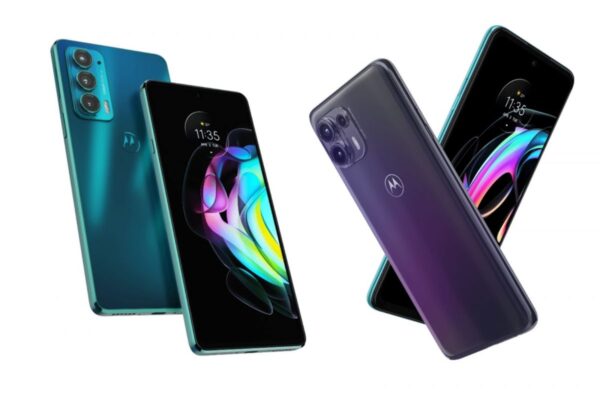
The 6.7-inch OLED display on the Motorola Edge 20 Fusion has a refresh rate of 90Hz, and the camera hole is in the centre. It is IP52 certified and includes a side-mounted fingerprint scanner and a dedicated Google Assistant button. At the back, you have a triple camera module that sticks out quite a bit.
The MediaTek Dimensity 800U processor and either 6GB or 8GB of RAM power the Motorola Edge 20 Fusion. There is 128GB of storage on both models. The Edge 20 Fusion comes pre-installed with Android 11 and Motorola’s thinly veiled MyUX user interface. The UI has further customization options and has a stock Android feel.
A 108-megapixel primary camera, an 8-megapixel ultra-wide-angle camera, and a 2-megapixel depth sensor make up the triple camera system on the Motorola Edge 20 Fusion. This phone sports a 32-megapixel front camera for taking selfies. The Moto Edge 20 Fusion’s camera performed well in bright light and for up-close shots. Camera performance in low light seems improved. The Edge 20 Fusion will appeal to purists on a budget and offers pristine Stock Android.
Reasons to purchase a 5G phone
Future-ready: In addition to supporting 5G networks, 5G smartphones are more future-proof gadgets. Just like we shifted from the micro-USB port to the USB Type-C port, the industry is transitioning to 5G networks and chipsets that support them. The future will belong to 5G phones.
Additionally, 5G phones will undoubtedly be more recent gadgets with all the benefits of purchasing a newer phone. This includes more recent features, frequent software upgrades, better cameras, and improved performance.
Upper segments: Deciding on a 5G smartphone is a no-brainer if you’re spending more than Rs 20,000 on a smartphone. This is due to the matter that there aren’t many 4G phones available in the higher price ranges (unless you take the used smartphone market into account), and that at that price, you’ll probably only use your phone for approximately three years, by which time most areas will have 5G coverage.
When a 4G phone like the iPhone 11 is on sale for around Rs 30,000, it may seem like a good deal, keep in mind that such handsets won’t receive many software upgrades and won’t ever support 5G, even if you move to a 5G service in the future.
Need higher internet speeds? A 5G smartphone is the best option for you if you need speedier mobile data for work or other purposes and are willing to pay for it. Even while some parts of India may not have the best 5G speeds, they are still faster than 4G speeds and may improve over time.
If you want to take advantage of places with the fastest data speeds in the future, you will need a smartphone that is compatible with 5G. This is true, you are travelling in India or anywhere else in the world.




